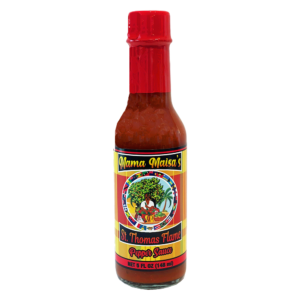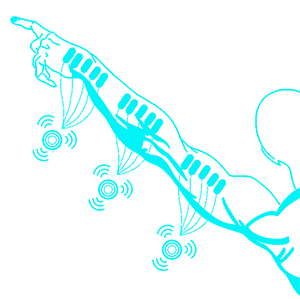Source: Copyright Wikipedia
Author: Open Source
Copyright is a legal right created by the law of a country that grants the creator of an original work exclusive rights for its use and distribution. This is usually only for a limited time. The exclusive rights are not absolute but limited by limitations and exceptions to copyright law, including fair use. A major limitation on copyright is that copyright protects only the original expression of ideas, and not the underlying ideas themselves.[1][2]
Copyright is a form of intellectual property, applicable to certain forms of creative work. Some, but not all jurisdictions require “fixing” copyrighted works in a tangible form. It is often shared among multiple authors, each of whom holds a set of rights to use or license the work, and who are commonly referred to as rights holders.[3][4][5][6] These rights frequently include reproduction, control over derivative works, distribution, public performance, and “moral rights” such as attribution.[7]
Copyrights are considered territorial rights, which means that they do not extend beyond the territory of a specific jurisdiction. While many aspects of national copyright laws have been standardized through international copyright agreements, copyright laws vary by country.[8]
Typically, the duration of a copyright spans the author’s life plus 50 to 100 years (that is, copyright typically expires 50 to 100 years after the author dies, depending on the jurisdiction). Some countries require certain copyright formalities to establishing copyright, but most recognize copyright in any completed work, without formal registration. Generally, copyright is enforced as a civil matter, though some jurisdictions do apply criminal sanctions.
Most jurisdictions recognize copyright limitations, allowing “fair” exceptions to the creator’s exclusivity of copyright and giving users certain rights. The development of digital media and computer network technologies have prompted reinterpretation of these exceptions, introduced new difficulties in enforcing copyright, and inspired additional challenges to copyright law’s philosophic basis. Simultaneously, businesses with great economic dependence upon copyright, such as those in the music business, have advocated the extension and expansion of copyright and sought additional legal and technological enforcement.
Ownership
The original holder of the copyright may be the employer of the author rather than the author himself if the work is a “work for hire”.[20] For example, in English law the Copyright, Designs and Patents Act 1988 provides that if a copyrighted work is made by an employee in the course of that employment, the copyright is automatically owned by the employer which would be a “Work for Hire”. Typically, the first owner of a copyright is the person who created the work i.e. the author.[21][21] But when more than one person creates the work, then a case of joint authorship can be made provided some criteria are met.
Eligible works
Copyright may apply to a wide range of creative, intellectual, or artistic forms, or “works”. Specifics vary by jurisdiction, but these can include poems, theses, fictional characters plays and other literary works, motion pictures, choreography, musical compositions, sound recordings, paintings, drawings, sculptures, photographs, computer software, radio and television broadcasts, and industrial designs. Graphic designs and industrial designs may have separate or overlapping laws applied to them in some jurisdictions.[22][23]
Copyright does not cover ideas and information themselves, only the form or manner in which they are expressed.[24] For example, the copyright to a Mickey Mouse cartoon restricts others from making copies of the cartoon or creating derivative works based on Disney’s particular anthropomorphic mouse, but does not prohibit the creation of other works about anthropomorphic mice in general, so long as they are different enough to not be judged copies of Disney’s.[24] Note additionally that Mickey Mouse is not copyrighted because characters cannot be copyrighted; rather, Steamboat Willie is copyrighted and Mickey Mouse, as a character in that copyrighted work, is afforded protection.
Originality
Main article: Threshold of originality
Typically, a work must meet minimal standards of originality in order to qualify for copyright, and the copyright expires after a set period of time (some jurisdictions may allow this to be extended). Different countries impose different tests, although generally the requirements are low; in the United Kingdom there has to be some “skill, labour, and judgment” that has gone into it.[25] In Australia and the United Kingdom it has been held that a single word is insufficient to comprise a copyright work. However, single words or a short string of words can sometimes be registered as a trademark instead.
Copyright law recognizes the right of an author based on whether the work actually is an original creation, rather than based on whether it is unique; two authors may own copyright on two substantially identical works, if it is determined that the duplication was coincidental, and neither was copied from the other.
Registration
A copyright certificate for proof of the Fermat theorem, issued by the State Department of Intellectual Property of Ukraine.
In all countries where the Berne Convention standards apply, copyright is automatic, and need not be obtained through official registration with any government office. Once an idea has been reduced to tangible form, for example by securing it in a fixed medium (such as a drawing, sheet music, photograph, a videotape, or a computer file), the copyright holder is entitled to enforce his or her exclusive rights.[14] However, while registration isn’t needed to exercise copyright, in jurisdictions where the laws provide for registration, it serves as prima facie evidence of a valid copyright and enables the copyright holder to seek statutory damages and attorney’s fees.[26] (In the USA, registering after an infringement only enables one to receive actual damages and lost profits.)
A widely circulated strategy to avoid the cost of copyright registration is referred to as the poor man’s copyright. It proposes that the creator send the work to himself in a sealed envelope by registered mail, using the postmark to establish the date. This technique has not been recognized in any published opinions of the United States courts. The United States Copyright Office says the technique is not a substitute for actual registration.[27] The United Kingdom Intellectual Property Office discusses the technique and notes that the technique (as well as commercial registries) does not constitute dispositive proof that the work is original nor who the creator of the work is.[28][29]
Fixing
The Berne Convention allows member countries to decide whether creative works must be “fixed” to enjoy copyright. Article 2, Section 2 of the Berne Convention states: “It shall be a matter for legislation in the countries of the Union to prescribe that works in general or any specified categories of works shall not be protected unless they have been fixed in some material form.” Some countries do not require that a work be produced in a particular form to obtain copyright protection. For instance, Spain, France, and Australia do not require fixation for copyright protection. The United States and Canada, on the other hand, require that most works must be “fixed in a tangible medium of expression” to obtain copyright protection.[30] U.S. law requires that the fixation be stable and permanent enough to be “perceived, reproduced or communicated for a period of more than transitory duration.” Similarly, Canadian courts consider fixation to require that the work be “expressed to some extent at least in some material form, capable of identification and having a more or less permanent endurance.”[30]
Copyright notice
A copyright symbol used in copyright notice
Before 1989, United States law required the use of a copyright notice, consisting of the copyright symbol (©, the letter C inside a circle), the abbreviation “Copr.”, or the word “Copyright”, followed by the year of the first publication of the work and the name of the copyright holder.[31][32] Several years may be noted if the work has gone through substantial revisions. The proper copyright notice for sound recordings of musical or other audio works is a sound recording copyright symbol (℗, the letter P inside a circle), which indicates a sound recording copyright, with the letter P indicating a “phonorecord”. In addition, the phrase All rights reserved was once required to assert copyright, but that phrase is now legally obsolete. Almost everything on the Internet has some sort of copyright attached to it. Whether these things are watermarked, signed, or have any other sort of indication of the copyright is a different story however.[33]
In 1989 the United States enacted the Berne Convention Implementation Act, amending the 1976 Copyright Act to conform to most of the provisions of the Berne Convention. As a result, the use of copyright notices has become optional to claim copyright, because the Berne Convention makes copyright automatic.[34] However, the lack of notice of copyright using these marks may have consequences in terms of reduced damages in an infringement lawsuit – using notices of this form may reduce the likelihood of a defense of “innocent infringement” being successful.[35]
Enforcement
Copyrights are generally enforced by the holder in a civil law court, but there are also criminal infringement statutes in some jurisdictions. While central registries are kept in some countries which aid in proving claims of ownership, registering does not necessarily prove ownership, nor does the fact of copying (even without permission) necessarily prove that copyright was infringed. Criminal sanctions are generally aimed at serious counterfeiting activity, but are now becoming more commonplace as copyright collectives such as the RIAA are increasingly targeting the file sharing home Internet user. Thus far, however, most such cases against file sharers have been settled out of court. (See: Legal aspects of file sharing)
In most jurisdictions the copyright holder must bear the cost of enforcing copyright. This will usually involve engaging legal representation, administrative or court costs. In light of this, many copyright disputes are settled by a direct approach to the infringing party in order to settle the dispute out of court.
“…by 1978, the scope was expanded to apply to any ‘expression’ that has been ‘fixed’ in any medium, this protection granted automatically whether the maker wants it or not, no registration required.”[36]
Copyright infringement
For a work to be considered to infringe upon copyright, its use must have occurred in a nation that has domestic copyright laws or adheres to a bilateral treaty or established international convention such as the Berne Convention or WIPO Copyright Treaty. Improper use of materials outside of legislation is deemed “unauthorized edition”, not copyright infringement.[37]
Copyright infringement most often occurs to software, film and music. However, infringement upon books and other text works remains common, especially for educational reasons. Statistics regarding the effects of copyright infringement are difficult to determine. Studies have attempted to determine whether there is a monetary loss for industries affected by copyright infringement by predicting what portion of pirated works would have been formally purchased if they had not been freely available.[38] Other reports indicate that copyright infringement does not have an adverse effect on the entertainment industry, and can have a positive effect.[39] In particular, a 2014 university study concluded that free music content, accessed on YouTube, does not necessarily hurt sales, instead has the potential to increase sales.[40]
Rights granted
Exclusive rights
Several exclusive rights typically attach to the holder of a copyright:
to produce copies or reproductions of the work and to sell those copies (including, typically, electronic copies)
to import or export the work
to create derivative works (works that adapt the original work)
to perform or display the work publicly
to sell or cede these rights to others
to transmit or display by radio or video.[41]
The phrase “exclusive right” means that only the copyright holder is free to exercise those rights, and others are prohibited from using the work without the holder’s permission. Copyright is sometimes called a “negative right”, as it serves to prohibit certain people (e.g., readers, viewers, or listeners, and primarily publishers and would be publishers) from doing something they would otherwise be able to do, rather than permitting people (e.g., authors) to do something they would otherwise be unable to do. In this way it is similar to the unregistered design right in English law and European law. The rights of the copyright holder also permit him/her to not use or exploit their copyright, for some or all of the term. There is, however, a critique which rejects this assertion as being based on a philosophical interpretation of copyright law that is not universally shared. There is also debate on whether copyright should be considered a property right or a moral right.[42]
If a pictorial, graphic or sculptural work is a useful article, it is copyrighted only if its aesthetic features are separable from its utilitarian features. A useful article is an article having an intrinsic utilitarian function that is not merely to portray the appearance of the article or to convey information. They must be separable from the functional aspect to be copyrighted.[43]




















